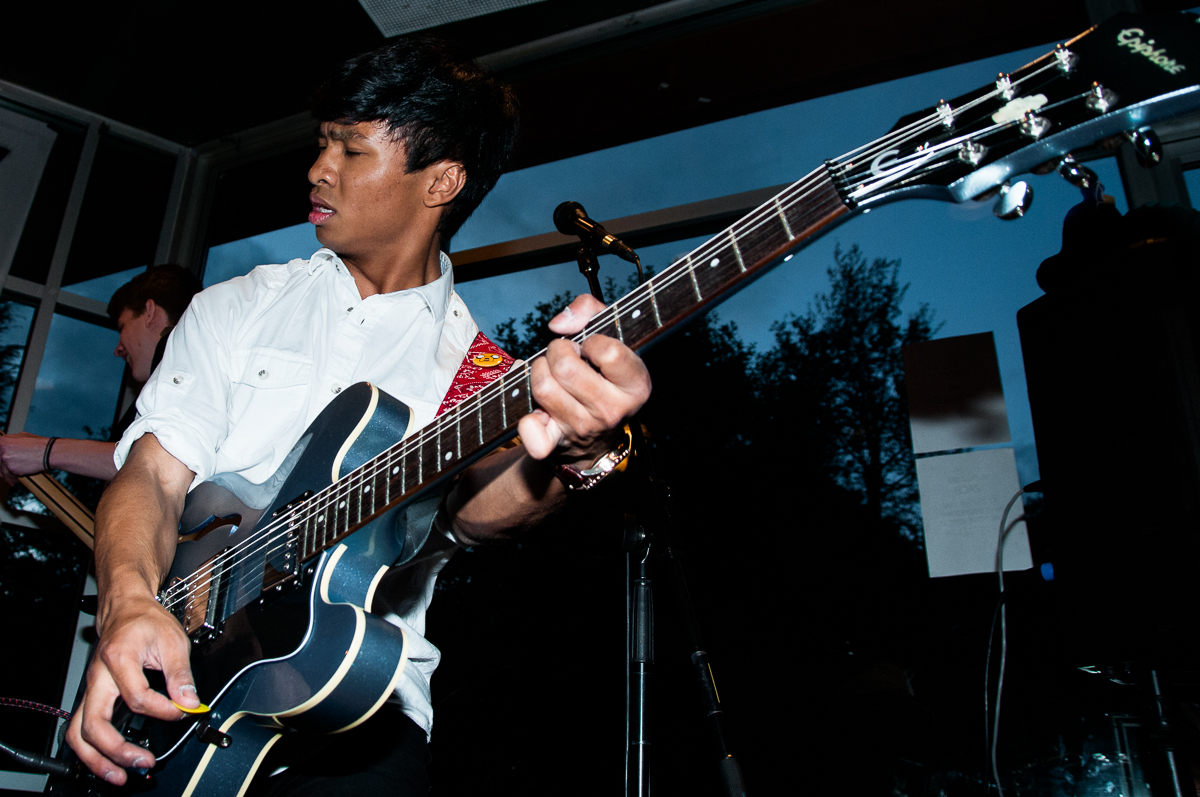 Helpful Posts: 0
Helpful Posts: 0
Results 1 to 9 of 9
Thread: Battle of the Bands
-
20th May 2013, 01:57 AM #1

- Join Date
- Dec 2011
- Location
- Surrey, BC, Canada
- Posts
- 301
- Real Name
- Blake

Battle of the Bands
-
20th May 2013, 02:22 AM #2
Re: Battle of the Bands
Nice Blake!
Here is what struck me when I first opened your thread…
I really liked the distortion of the head/neck leading back to the picker! Nice use of that.
And ain’t it the Truth about a band that plays for the camera/audience?
-
20th May 2013, 05:07 AM #3

- Join Date
- Dec 2011
- Location
- Surrey, BC, Canada
- Posts
- 301
- Real Name
- Blake

Re: Battle of the Bands
Yeah the distortion really adds to it in my opinion. It was shot at a 24mm equivalent (17 on a d300s), I was basically face to face with the players.
-
20th May 2013, 06:39 AM #4Moderator


- Join Date
- Feb 2009
- Location
- Glenfarg, Scotland
- Posts
- 21,402
- Real Name
- Just add 'MacKenzie'
Re: Battle of the Bands
That's really good, imaginative use of a wide angle lens.
-
20th May 2013, 01:12 PM #5
Re: Battle of the Bands
If that's uncropped, then I applaud your timing. If it's cropped, I applaud your aesthetic choice.

Excellent use of on-camera flash, as well. Kier is nicely separated from the background. But the flash threw a shadow of the head onto those two grey cards in the background. It's a little distracting, but you can probably paint over them with black.
-
20th May 2013, 09:58 PM #6
-
21st May 2013, 08:01 AM #7

- Join Date
- Dec 2011
- Location
- Surrey, BC, Canada
- Posts
- 301
- Real Name
- Blake

Re: Battle of the Bands
I cropped a little from the top and left. In the original frame you could just see past the tip of the bass on the left, to give you an idea. I wish my timing was that good.
Perhaps I'll paint them down a bit, thanks for the feedback! I've always been a little afraid to use direct on camera flash, but after this I'm feeling it's not so bad. (the ceilings were black so bouncing was not an option)
-
21st May 2013, 01:07 PM #8
Re: Battle of the Bands
I maintain that direct flash is extremely useful, but mainly for fill light. I shoot roller derby with a pair of 580EX II remotes as the main light, and one 600EX-RT on the shoe for fill. Shoot direct, by all means, but always diffuse or (as you did) turn the flash exposure compensation way down. To me, direct flash's shadows are far more irritating than the light quality (assuming the flash is color-balanced to match the conditions). Fortunately, in this case, the background was clear enough that there are very few shadows.
Nice work all around.
-
22nd May 2013, 06:59 AM #9

- Join Date
- Dec 2011
- Location
- Surrey, BC, Canada
- Posts
- 301
- Real Name
- Blake

Re: Battle of the Bands
I'd like to add that the main reason the background was so much darker than the subject is because of the inverse square law. I was basically face to face with the musician, so the background was about 10-15x as far away which is what made it so much darker. Had I been farther back and using a telephoto lens instead of a wide, then the background would have been much closer in brightness to the subject, and things like the amps to the right would be clearly visible.
In addition, the subject wasn't overexposed not because of any flash compensation, but because I was using the flash in manual mode with manual exposure. Since my subject to camera distance didn't change much, the exposure didn't have to change either. There were a few photos at the beginning that were over or underexposed as I got the settings right, but once it's set, it's fine, just like your normal shutter speed/ aperture/ iso.
Just a quick tip for anyone interested in flash who stumbles across this.



 Reply With Quote
Reply With Quote
